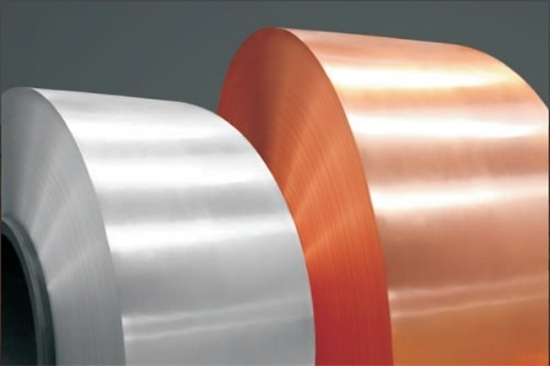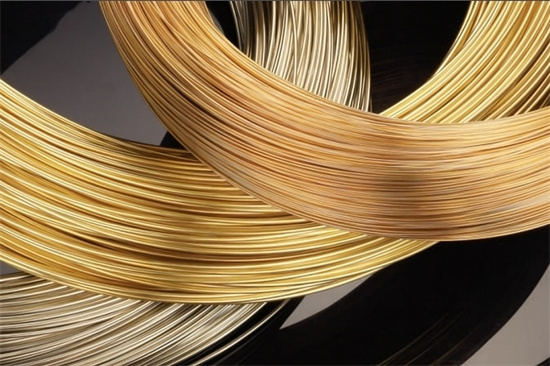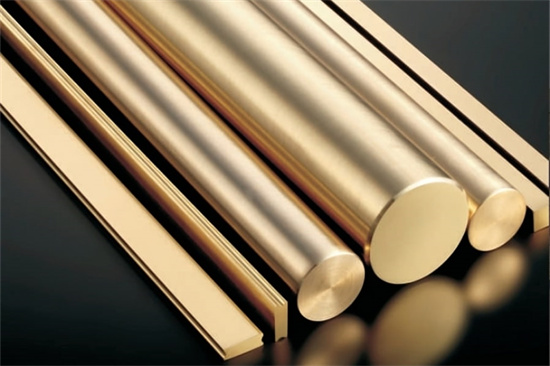


CuAl8Fe3: Why This Copper-Aluminum Alloy Outperforms the Rest
Low MOQ
Provide low minimum order quantity to meet different needs.
OEM & ODM
Provide customized products and design services to meet unique customer needs.
Adequate Stock
Ensure fast order processing and provide reliable and efficient service.
Customer Satisfaction
Provide high quality products with customer satisfaction at the core.
share this article
Table of Contents
When it comes to materials that offer an exceptional blend of strength, corrosion resistance, and wear resistance, CuAl8Fe3 stands as a top contender. This copper-aluminum alloy, often referred to as aluminum bronze, is widely used across industries for its unique combination of properties. Whether you’re involved in marine engineering, aerospace, or heavy machinery, CuAl8Fe3 brings reliability and performance to the table.
In this comprehensive guide, we’ll dive deep into what makes CuAl8Fe3 so unique. We’ll cover its composition, properties, applications, and specifications, while also comparing it to other alloys. By the end of this article, you’ll have a thorough understanding of CuAl8Fe3, why it’s used, and how it stacks up against alternative materials.
Overview
CuAl8Fe3 is an aluminum bronze alloy that consists of roughly 8% aluminum and 3% iron, with the remainder being copper. This alloy is particularly valued for its high strength, excellent corrosion resistance, and good wear resistance. If you’re looking for a material that can withstand harsh environments, CuAl8Fe3 should be high on your list.
Key Benefits
- High mechanical strength: Ideal for parts that endure high stress and heavy loads.
- Corrosion resistance: Performs exceptionally well in marine environments and other corrosive atmospheres.
- Wear resistance: Thanks to its robust composition, CuAl8Fe3 resists wear and tear from friction and abrasion.
- Good machinability: While harder than plain copper, this alloy maintains decent machinability with the right tools.
In short, CuAl8Fe3 is a workhorse alloy that balances toughness and durability, making it a popular choice in demanding industries.
Composition and Properties
Understanding the composition of CuAl8Fe3 is essential to recognizing why this alloy performs so well in high-stress environments. Let’s break down its key elements and the roles they play in enhancing the alloy’s properties.
Composition Breakdown
| Element | Percentage (%) |
|---|---|
| Copper (Cu) | 88 – 89 |
| Aluminum (Al) | 7.5 – 8.5 |
| Iron (Fe) | 2.5 – 3.5 |
| Nickel (Ni) | ≤ 1.0 |
| Manganese (Mn) | ≤ 0.5 |
| Silicon (Si) | ≤ 0.1 |
| Zinc (Zn) | ≤ 0.1 |
| Lead (Pb) | ≤ 0.05 |
Function of Each Element
- Copper (Cu): Provides ductility, thermal conductivity, and corrosion resistance.
- Aluminum (Al): Increases strength, hardness, and enhances corrosion resistance.
- Iron (Fe): Improves strength and wear resistance.
- Nickel (Ni): Adds toughness and improves the alloy’s resistance to corrosion.
- Trace Elements: Elements like manganese, silicon, and zinc contribute to the alloy’s overall machinability and structural integrity.
Mechanical and Physical Properties
The table below highlights the mechanical and physical properties of CuAl8Fe3.
| Property | Typical Value |
|---|---|
| Tensile Strength | 500 – 600 MPa |
| Yield Strength | 200 – 300 MPa |
| Elongation | 15 – 25% |
| Hardness (HB) | 120 – 150 HB |
| Density | ~7.6 g/cm³ |
| Thermal Conductivity | 35 – 45 W/m·K |
| Electrical Conductivity | ~10 – 15% IACS |
| Melting Point | 1035°C – 1050°C |
| Coefficient of Expansion | 18 x 10⁻⁶/°C |
What Do These Properties Mean?
- Tensile Strength: The ability of CuAl8Fe3 to withstand high loads makes it suitable for parts that are subject to heavy stress or compression.
- Elongation: The alloy’s ability to stretch before breaking ensures that it won’t crack or fail under tension.
- Corrosion Resistance: With its high aluminum and iron content, CuAl8Fe3 offers substantial protection against oxidation and seawater corrosion—ideal for marine applications.
Applications
Now that we’ve covered the alloy’s composition and properties, let’s explore where it is most commonly used. This alloy’s strength, corrosion resistance, and wear resistance make it a prime candidate for a wide range of industries.
Common CuAl8Fe3 Applications by Industry
| Industry | Common Applications |
|---|---|
| Marine Engineering | Propellers, shafts, rudder components, pump parts |
| Aerospace | Landing gear bushings, structural components |
| Oil and Gas | Valve components, wear-resistant fittings |
| Heavy Machinery | Bearings, gears, guide rails, wear plates |
| Automotive | Engine components, bushings, valve guides |
| Construction | Sliding components, hydraulic cylinder parts |
Why CuAl8Fe3 is Ideal for These Applications
- Marine Engineering: The alloy’s corrosion resistance and wear resistance make it perfect for propellers, shafts, and other components that are constantly exposed to seawater.
- Aerospace: For landing gear and other high-stress parts, CuAl8Fe3 provides the necessary strength and durability.
- Heavy Machinery: Bearings, gears, and other parts that face constant friction benefit from the alloy’s wear resistance.
Specifications, Sizes, and Standards
When selecting CuAl8Fe3 for a specific project, it’s important to understand the available sizes, grades, and standards. This section will guide you through the typical specifications you can expect when sourcing this alloy.
Specifications
| Specification | Details |
|---|---|
| Available Forms | Rods, plates, bars, tubes |
| Diameter Range (Rods) | 10 mm to 200 mm |
| Thickness Range (Plates) | 2 mm to 100 mm |
| Length (Bars) | Up to 6 meters |
| Temper | Annealed, cold-worked |
| Standards | GB/T 5231-2012, ASTM B150, DIN 1705 |
Grades
| Grade | Characteristics |
|---|---|
| CuAl8Fe3-Soft (Annealed) | More ductile, better machinability |
| CuAl8Fe3-Hard (Cold-Worked) | Increased strength, better wear resistance |
Suppliers and Pricing Information
To get the best performance out of CuAl8Fe3, you need to source it from reliable suppliers. Pricing can vary based on factors such as the form, grade, and location of the supplier. Below is a list of suppliers along with typical pricing.
Suppliers and CuAl8Fe3 Pricing
| Supplier | Location | Price Range (per kg) | Delivery Time |
|---|---|---|---|
| Shanghai Metals | China | $18 – $30 | 2-4 weeks |
| Metal Supermarkets | USA | $22 – $35 | 1-2 weeks |
| EuroAlloys | Europe | €20 – €32 | 2-3 weeks |
| CopperAlloy Solutions | UK | £24 – £38 | 2 weeks |
Factors Influencing CuAl8Fe3 Pricing
- Form: Rods and plates tend to be priced differently, with larger dimensions usually costing more.
- Grade: Cold-worked grades are usually more expensive than annealed or soft versions due to the additional processing.
- Location: The price may vary depending on shipping costs, import/export duties, and supplier location.
Advantages and Limitations
Like any material, CuAl8Fe3 has its strengths and weaknesses. Let’s take a comprehensive look at why you might choose this alloy, as well as any potential drawbacks to consider.
Pros and Cons
| Advantages | Limitations |
|---|---|
| Excellent corrosion resistance | Higher cost compared to standard brass alloys |
| High wear resistance | Lower electrical conductivity than copper |
| Good machinability | Can be more difficult to machine than softer alloys |
| High tensile strength and durability | Cold-worked versions may need special tools for machining |
| Suitable for marine and high-stress environments | Not ideal for applications requiring high electrical conductivity |
Key Insights
- CuAl8Fe3 shines in applications that require strength, corrosion resistance, and durability, making it a great choice for marine and industrial uses.
- However, it comes at a premium compared to other bronze alloys, and it may not be the best choice for applications where electrical conductivity is a priority.
CuAl8Fe3 vs. Other Alloys
How does CuAl8Fe3 compare to other aluminum bronzes and copper alloys? Let’s take a look at how it stacks up against some popular alternatives, such as CuAl10Ni5Fe4 and CuSn12.
CuAl8Fe3 vs. CuAl10Ni5Fe4 vs. CuSn12
| Property | CuAl8Fe3 | CuAl10Ni5Fe4 | CuSn12 |
|---|---|---|---|
| Tensile Strength | 500 – 600 MPa | 600 – 800 MPa | 350 – 500 MPa |
| Yield Strength | 200 – 300 MPa | 300 – 500 MPa | 150 – 250 MPa |
| Elongation | 15 – 25% | 8 – 15% | 20 – 30% |
| Corrosion Resistance | Excellent | Excellent | Moderate |
| Wear Resistance | High | Very High | Moderate |
| Machinability | Good | Fair | Good |
| Cost | Moderate to High | High | Moderate |
Key Takeaways from the Comparison
- It offers a balanced combination of strength, corrosion resistance, and machinability, making it a versatile choice.
- CuAl10Ni5Fe4 provides higher strength and wear resistance, but it comes at a higher price and is more difficult to machine.
- CuSn12 is more affordable and easier to machine but lacks the strength and corrosion resistance of CuAl8Fe3, making it less ideal for high-stress applications.
Frequently Asked Questions (FAQ)
We know that choosing the right alloy can be tricky, so here are some answers to common questions about CuAl8Fe3.
| Question | Answer |
|---|---|
| What is CuAl8Fe3 used for? | It is commonly used in marine, aerospace, and machinery applications due to its strength, corrosion resistance, and wear resistance. |
| Is CuAl8Fe3 corrosion resistant? | Yes, it offers excellent corrosion resistance, especially in marine environments. |
| How much does CuAl8Fe3 cost? | Prices typically range from $18 to $35 per kg, depending on the supplier, form, and grade. |
| Can CuAl8Fe3 be heat treated? | It is usually cold-worked to improve its mechanical properties rather than heat-treated. |
| What are the key properties of CuAl8Fe3? | It offers a combination of high strength, good machinability, and excellent corrosion resistance. |
| Is CuAl8Fe3 easy to machine? | Yes, although cold-worked grades may require special tools due to their hardness. |
Conclusion
It is a high-performance aluminum bronze alloy that excels in applications requiring strength, wear resistance, and corrosion resistance. Whether you’re working in marine engineering, aerospace, or heavy machinery, it offers the reliability and durability you need for long-lasting performance.
While it may be more expensive than some other alloys, its superior properties—especially in marine environments—make it worth the investment. It’s also a versatile material that can be used across multiple industries, making it a go-to choice for engineers and manufacturers alike.
In summary, if you need a material that can withstand harsh conditions, provide long-term durability, and offer excellent corrosion resistance, it should be at the top of your list.
Maybe you want to know more about our products, please contact us
Get Latest Price
About Met3DP
Product Category
HOT SALE
CONTACT US
Any questions? Send us message now! We’ll serve your request with a whole team after receiving your message.

Metal Powders for 3D Printing and Additive Manufacturing
COMPANY
PRODUCT
cONTACT INFO
- Qingdao City, Shandong, China
- [email protected]
- [email protected]
- +86 19116340731








